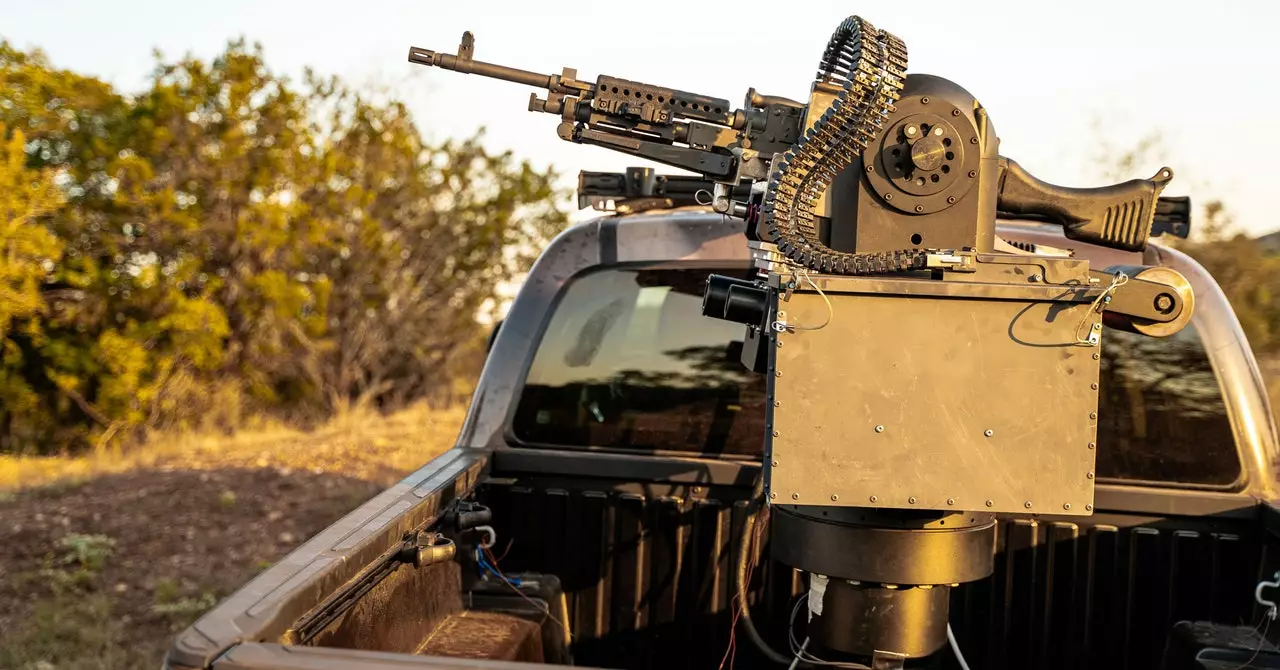As military conflicts advance into more technologically sophisticated realms, the emergence of adversary drones poses an escalating threat to armed forces worldwide. The U.S. military is expanding its strategic responses to these low-cost but effective unmanned aerial vehicles (UAVs), which often carry lethal payloads and are increasingly utilized by hostile forces. This surge in drone proliferation exemplifies a shift in warfare dynamics, where adversaries can engage U.S. troops from above with minimal risk to themselves. In response to this shifting landscape, military strategists are exploring innovative solutions to bolster defense capabilities.
Caught in a race against time and technology, the Pentagon’s exploration of various defensive measures has unveiled a trend towards reengineering classic weaponry. Rather than over-relying on expensive air defense systems or high-tech directed energy weapons—which, while promising, often come with complex deployment challenges—the U.S. military is reinvigorating traditional firearms. This strategic pivot points towards a more straightforward, yet effective method: enhancing the gun itself. This evolution has manifested in projects such as the Bullfrog, an AI-enabled autonomous robotic gun system developed by Allen Control Systems.
At the Technology Readiness Experimentation (T-REX) event this past August, the Pentagon demonstrated the Bullfrog, which integrates a 7.62-mm M240 machine gun onto a swiveling turret equipped with advanced electro-optical sensors. The hallmark of this system is its artificial intelligence and computer vision capabilities, engineered to enable precise targeting of drone threats. The footage from the demonstration revealed the Bullfrog’s ability to successfully identify and neutralize multiple drone targets with remarkable accuracy and efficiency, a feat that outpaces the abilities of a typical service member using standard-issue rifles.
The implications of adopting such systems could be seismic. If integrated into the U.S. military arsenal, the Bullfrog could signify the first publicly acknowledged autonomous lethal weapon utilized by American forces. As noted by Alex Lovett of the Pentagon’s Research and Engineering office, tests have shown the Bullfrog to be a “low-cost” alternative that performs admirably in counter-drone scenarios. While not a silver bullet solution, it lays the groundwork for a multi-layered defense strategy capable of countering the increasing drone threats.
Conventional firearms and small arms fire can struggle against fast-moving aerial targets, a hindrance recognized within military ranks. The Pentagon has been exploring various enhancements to weaponry aimed at improving efficacy against drones, which includes the development of specialized munitions. New designs such as “shotgun-like” rounds, integrated jamming systems, and advanced optics that assist shooter targeting are all indicators of this ongoing evolution. Furthermore, the Army’s initiative to integrate counter-drone exercises into basic training showcases a dedicated effort to equip service members with essential skills tailored for modern combat environments.
The Role of AI in Weapon Enhancement
The integration of artificial intelligence into weapons systems represents an important advancement in military technology, promising to refine the critical processes of target acquisition and engagement. Steve Simoni, co-founder and CEO of Allen Control Systems, emphasizes that the best antidote to the drone dilemma lies not in merely augmenting existing firearms with additional gadgets or extended training regimens. Instead, he advocates for a groundbreaking convergence of robotics and AI, which could fundamentally alter how the military approaches aerial threats.
In a world where adversaries can effectively strike from the skies, the need for a reliable and adaptive response mechanism is imperative. Advanced systems like the Bullfrog could potentially shift not just tactics but entire operational paradigms within military engagements. By minimizing the gap in reaction time and improving shooting accuracy, AI-enhanced solutions may redefine the interplay between manned units and aerial threats on the battlefield.
The rise of lethal drones necessitates an evolution in military strategy and technology. The drive toward automation in weaponry, highlighted by prototypes like the Bullfrog, represents a significant shift in thinking about aerial defense. As the U.S. military continues to refine its approaches to countering UAV threats, the importance of blending old paradigms with modern advancements becomes abundantly clear. The future of combat may not solely rely on the advancement of high-tech weaponry but rather on the innovative reinvention of traditional arms informed by the insights and capabilities of artificial intelligence. As the dynamics of war evolve, so too must the tools we use to protect those who serve.


Leave a Reply